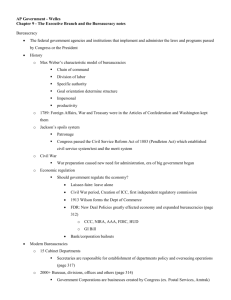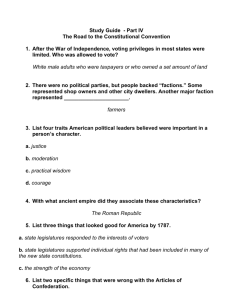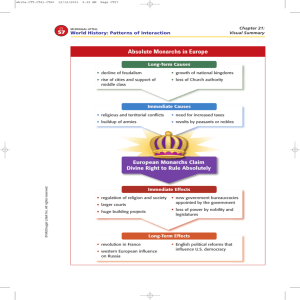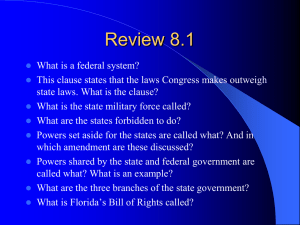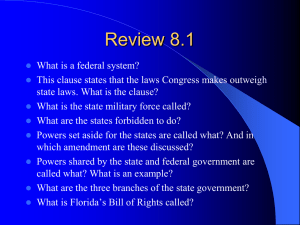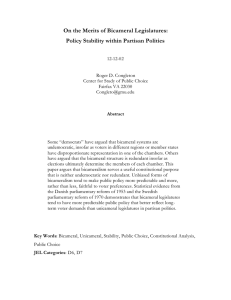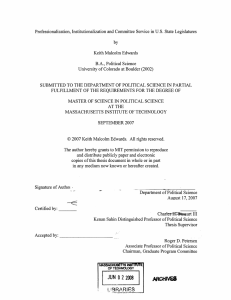Political Institutions
advertisement
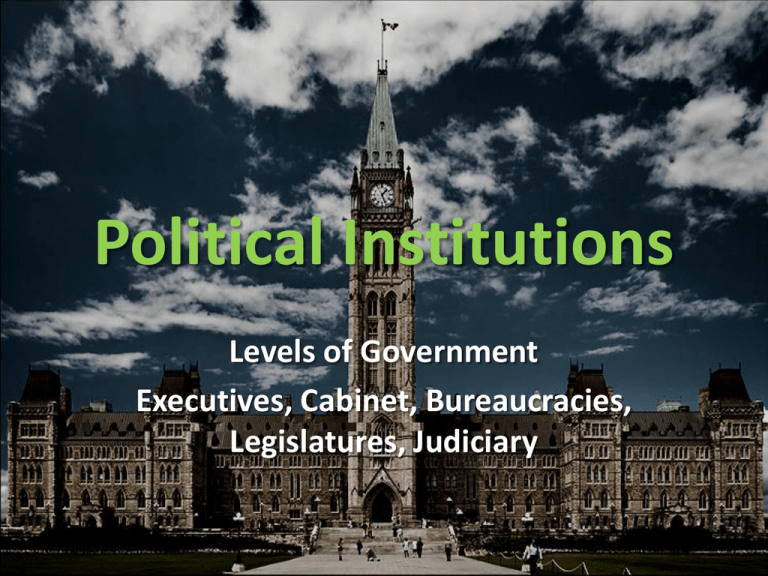
Political Institutions Levels of Government Executives, Cabinet, Bureaucracies, Legislatures, Judiciary Defining Political Institutions • Political Institutions – structures of a political system that carry out the work of governing. • • • • Executives Legislatures Bureaucracies Judicial Systems Levels of Government Unitary System – concentrates all policymaking powers in one central government (geographic) place Ex.) Britain, Iran, China Confederal System – spreads the power among many sub-units and has a weak central government. Ex.) United States (1781-1788) Federal System – divides the power between the central government & the sub-units Ex.) Russia, Mexico, Nigeria, U.S. Executives • Executive– carries out the laws and policies of a state. British Government Example – Head of State • Symbolizes and Represents the people (nationally & internationally) • May not have any real policymaking power – Head of Government • Everyday tasks of running government • Directs activities of other members of Executive Branch – Head of State & Government Queen Elizabeth II President Barack Obama Legislatures • Legislature – branch of government charged with making laws. – Unicameral – one house legislature – Bicameral - two house legislature • Advantages – – – – Allows representation for both region & population Counterbalance disproportionate power in any one region Disperses power Guards against impulsive legislation Unicameral vs. Bicameral Legislatures Bicameral Unicameral Legislatures Functions of Legislatures Formulate, debate & vote on policies Control budget (often) – taxing and spending Some appoint officials in the executive & judicial branches Elite Recruitment – identifying future leaders of the government Policy Making? Ex.) U.S. Congress – active role in forming and enacting legislation Ex.) National People’s Congress of the People’s Republic of China – primarily a rubberstamp for policy developed by Communist Party Bureaucracies • Bureaucracies – consist of agencies that implement government policy. – Characteristics • • • • Non-Elected Positions Impersonal, Efficient/Goal-Orientated Structures Hierarchical Organization Red tape/inefficiency Ex.) Internal Revenue Service (IRS) Ex.) Occupational Safety & Health Administration (OSHA) Bureaucracies Concerns over Political Role/Powers Discretionary Power – the power to make small decisions in implementing legislative and executive decisions. ISSUE – Democratic beliefs require decisions to be made by elected officials, not by appointed bureaucrats. Former white House Chief of Staff Rahm Emanuel had tremendous influence in the executive branch, yet he wasn’t elected to this position. Judiciaries Role of the Judiciary Vary from country to country Authoritarian Systems: Courts generally have little to no independence and their decisions are controlled by the chief executive. Democratic Systems: Constitutional Courts – serve to defend democratic principals against infringement by both citizens and the government. Judicial Review – allows courts to review laws and executive actions for their constitutionality Marbury v. Madison (1803) 1st Supreme Court decision to determine an act of Congress was unconstitutional – thus establishing the authority of Judicial Review
